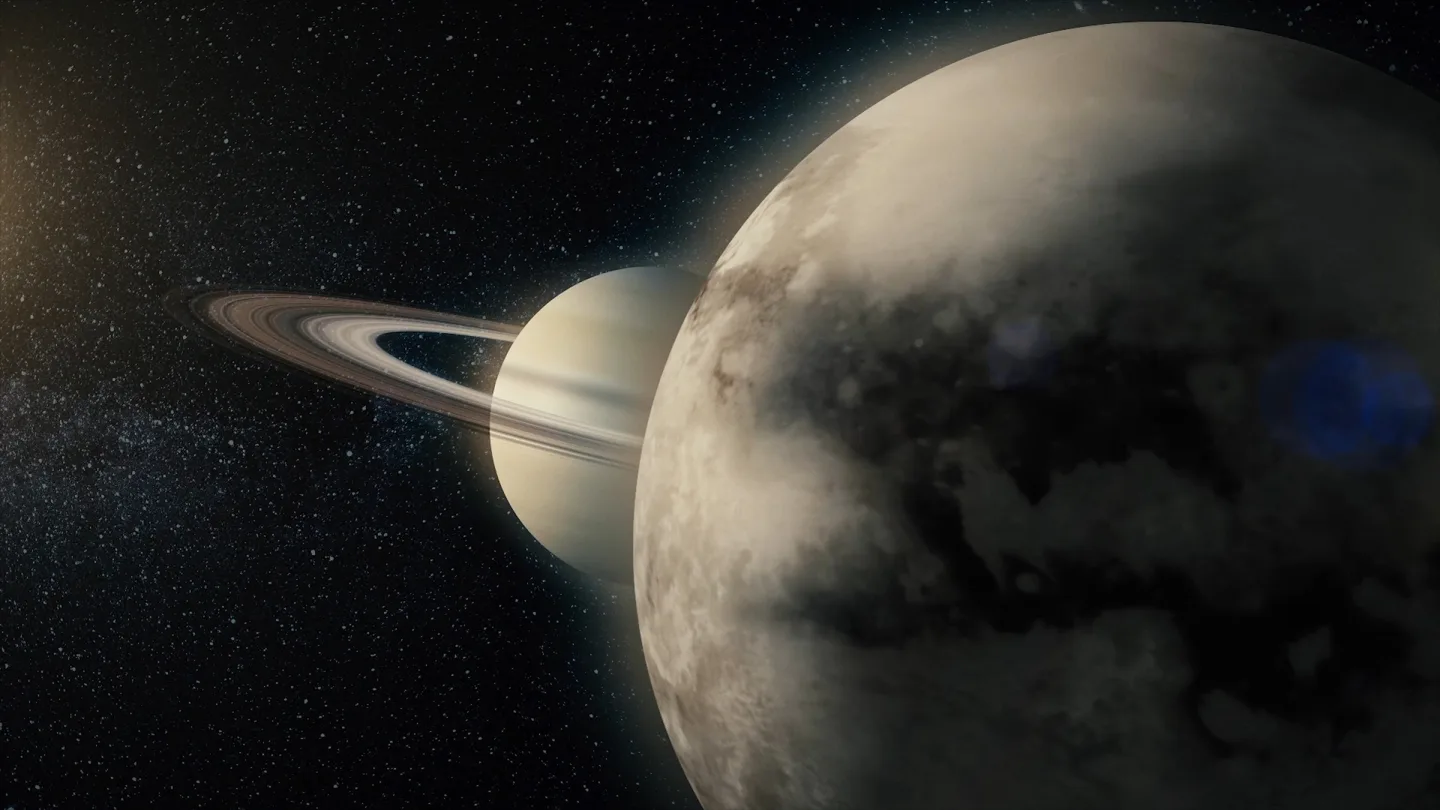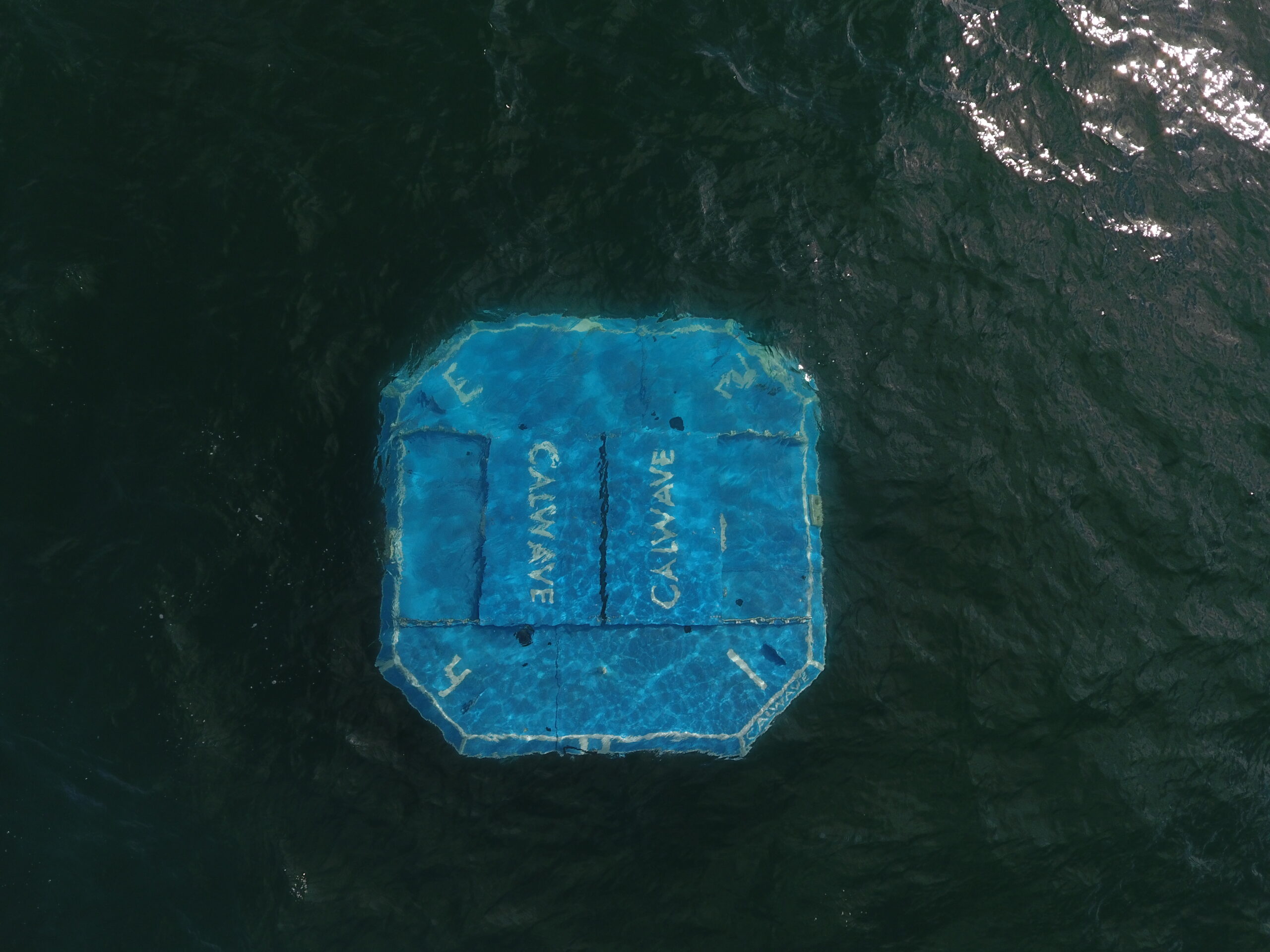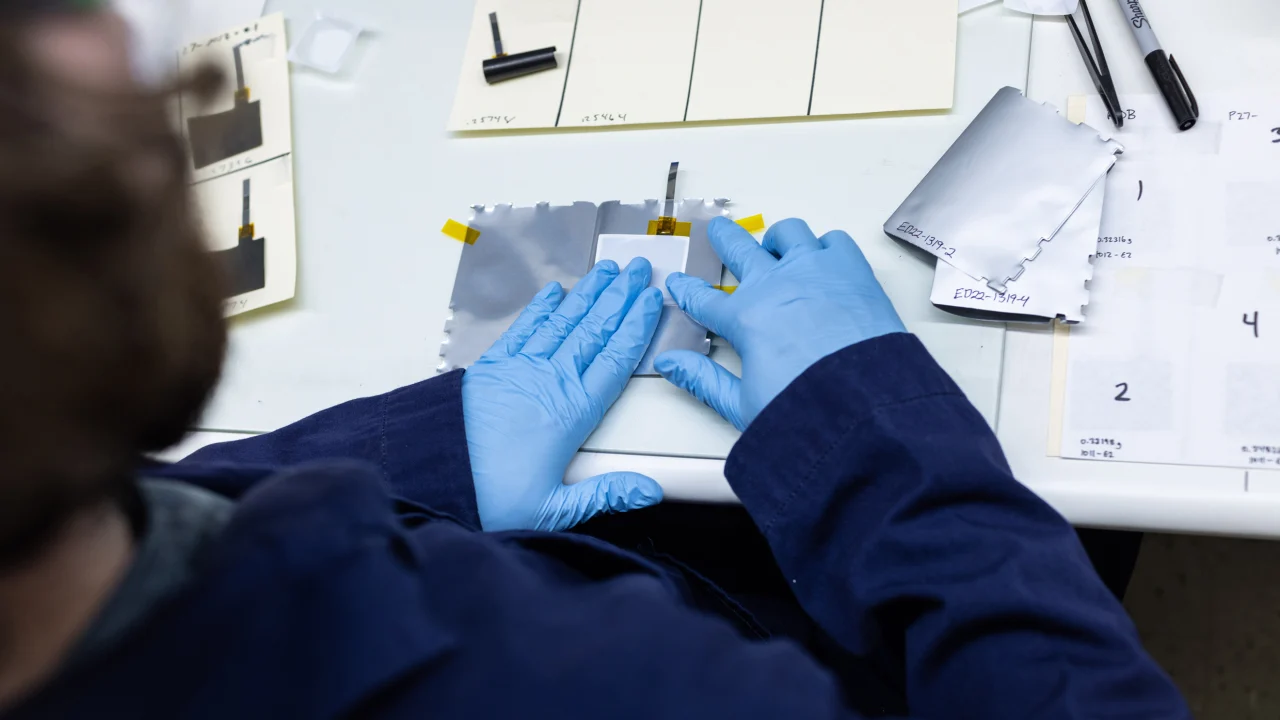Titan, Saturn’s biggest moon, will be the focus of a future NASA mission to look for alien life in its thick atmosphere and liquid methane rivers, lakes, and oceans.
Even though previous observations and the most recent Webb image of Titan make it look like Earth, scientists think it is nothing like our planet. A recent study of Titan’s landscapes showed that the planet is made up of more fragile parts and explained how those landscapes formed. But one thing about this satellite that has always been interesting is why it looks so much like Earth.
These missions will not reach Titan until the 2030s, but scientists have anxiously awaited the first glimpses of the distant moon from the James Webb Space Telescope.
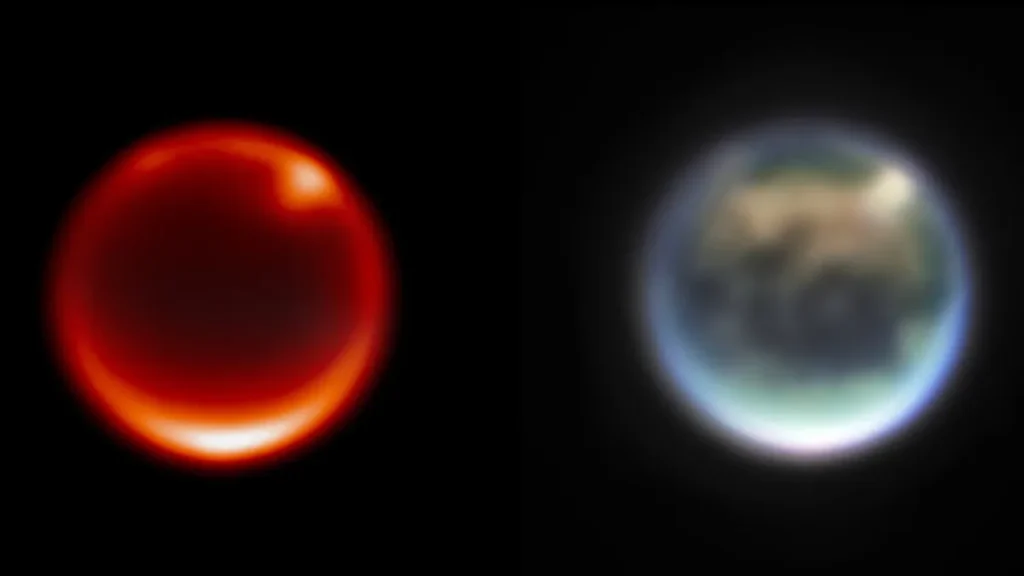
According to a press release from NASA, that time has come. On November 4, the Webb team saw two large methane clouds in Titan’s atmosphere.
“Fantastic! Love seeing the cloud and the clear albedo markings, “In an email included in the announcement, Heidi Hammel, a planetary scientist at the Association of Universities for Research in Astronomy and the project director for JWST’s work in doing research regarding the solar system, said that there were glimpses of bright and dark spots on Titan’s surface.”
James Webb provides unparalleled access to Titan’s atmosphere.
Scientists have been interested in Titan for a long time because its surface has rivers, lakes, and seas, just like Earth. This means there might be some life on the Titans, but it would probably be very different from life on Earth because the Titan’s seas and rivers are made of liquid methane. So life there would be different from Our life form.
In 2004, NASA performed a mission named Cassini mission where they sent a satellite to Saturn and gave us a view of Saturn and Titan that had never been seen before. But from its location in deep space at Lagrange Point 2, Webb can “look at Titan’s composition and surface in ways that even Cassini couldn’t,” NASA wrote on Twitter.
The James Webb observatory looked at Titan for a total of 15 hours. The observations were set up by Conor Nixon, an astronomer at NASA’s Goddard Space Flight Center in Maryland. In its statement, NASA says that Titan’s “atmosphere is full of a thick haze that blocks light from the surface.” That’s why Titan is very cold. And it was the perfect place for Webb’s infrared imaging instruments, which can see through thick clouds to see what’s below.
“Fantastic! Love seeing the cloud and how the albedo is so clear. So excited about the spectra! Congrats, all, “Heidi Hammel, a planetary scientist at the Association of Universities for Research in Astronomy and a project lead for JWST’s work in the solar system, said.
The albedo markings show where the surface of Titan is bright and dark. The spectra markings show what the observatory’s Near-Infrared Spectrograph saw (NIRSpec). Scientists can figure out what chemicals are in Titan’s atmosphere by looking at the different colors of light that come from its atmosphere.
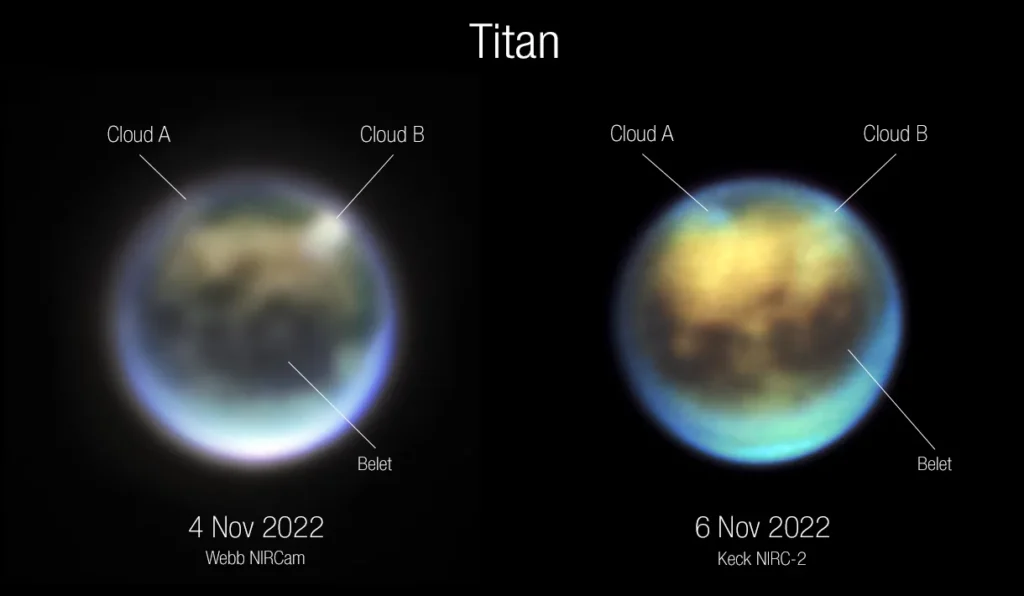
It’s said that Webb’s pictures of Titan are “absolutely spectacular.”
In its statement, NASA included several email responses from scientists. Sebastien Rodriguez, an astronomer at the Université Paris Cité who is working on the research, wrote, “At first glance, it seems very strange. I think that’s a cloud in the sky!” And that’s how it all started.
The scientists finally realized they saw something that had never been seen before: two clouds in Titan’s atmosphere. One of these was over Kraken Mare, the largest sea on Titan. Even though the scientists’ time with Webb was up, they decided to look at these clouds again with the help of the Keck Observatory in Hawaii. They could see the same clouds only two days after Webb took pictures of them.
“We were anxious that the clouds would be gone when we looked at Titan two days later with Keck,” said Imke de Pater, an astronomer at the University of California, Berkeley, who directs Keck’s investigations of Titan. “However, to our delight, there were clouds in the same spots that looked to have changed shape,” which clouds commonly do.
It is worth noting, however, that the position of the clouds in the Keck Observatory data might be a coincidence, as the northern hemisphere of Titan is supposed to be cloudy in late summer.
NASA will observe Titian again in 2030
Webb’s observations use NIRCam and NIRSpec images from the observatory. Scientists can focus on Titan’s lower atmosphere with the first one and find out what compounds are in the lower one with the second one.
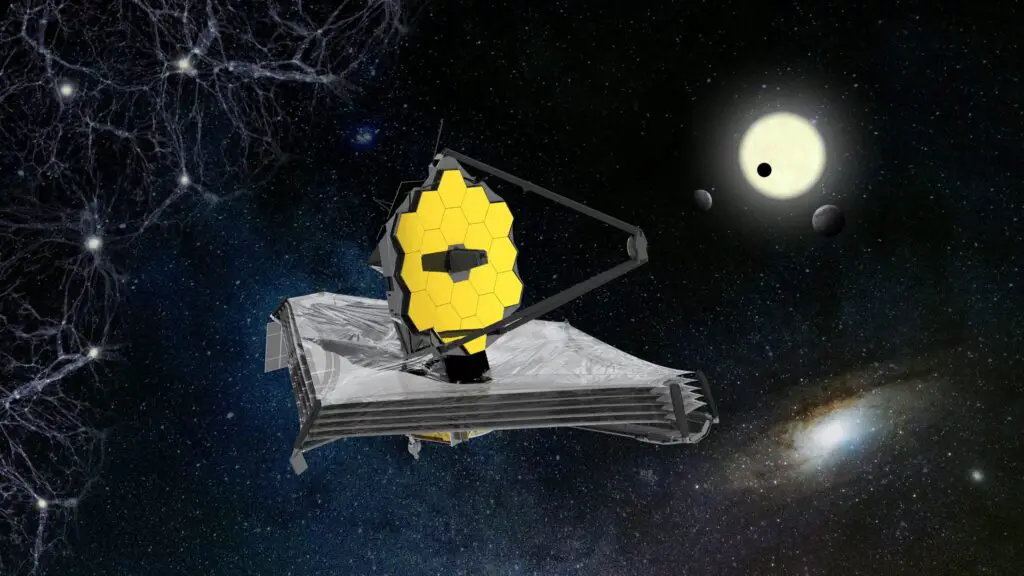
According to a statement from NASA, James Webb won’t look at Titan again until May or June 2023. When it is pointed back at Saturn’s moon, its Mid-Infrared Instrument (MIRI) will help scientists better understand what their spectra readings mean.
NASA is working on the Dragonfly project, which will fly a drone across Titan’s atmosphere in the 2030s, similar to the Mars Ingenuity helicopter. Until then, scientists on Earth will have to sift through a mountain of Titan data.
We may discover life on Titan that is quite different from ours in the future, but we don’t know if it exists at all right now.

